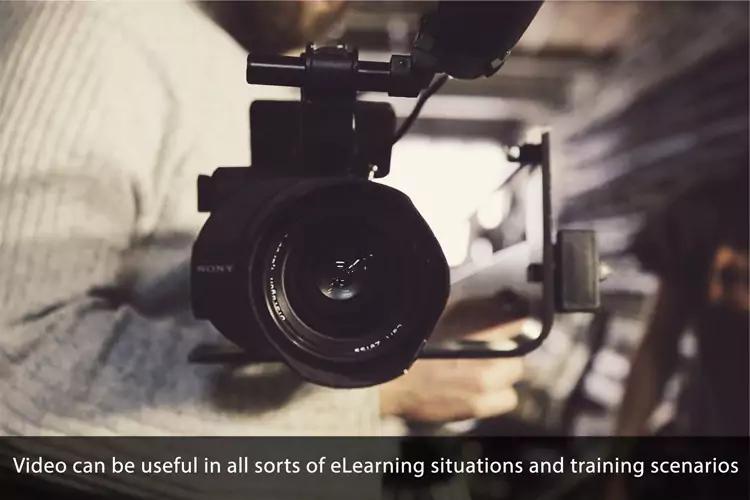Media Production Part 1: eLearning Leaders

There’s really no way around it: Being an eLearning professional in the 21st century means at least knowing a good deal about media production. Why? Because corporate learning resources need to be available to employees not only when they need it, but also in the most conducive media format to the situation at hand. In this first article on the topic, I’ll focus on various forms of video production in the eLearning environment.

Video can be useful in all sorts of eLearning situations and training scenarios. Given the choice between reading the fine print of an instruction manual from the IT department for setting up and configuring some new bit of technology, what millennial in their right mind wouldn’t want to watch a quick video showing them exactly what to do? That’s just one small example of the power of video media that your company should be leveraging for business results.
The background principles at work here include learning on demand – learning and training resources available at the moment they are needed, and in whatever delivery method makes the most sense. A lot of the time, the easiest-to-digest chunks of learning, especially among the younger generations, will be video-on-demand. It’s clearly one of the most effective ways to get information into the hands of employees when they need it most.
This should raise the ultimate question in your mind: To what extent are your eLearning professionals and leaders up-to-speed on video production skills?
It’s an important question to stop and consider, especially given the rapid proliferation of this easy-to-digest media channel. It’s hard to believe that YouTube was born just a decade ago in 2005 when Chad Hurley, Steve Chen, and Jawed Karim came together activated the domain name YouTube.com. Interestingly enough, they were all early employees of PayPal. Clearly, it was an idea whose time had come. By the summer of 2006, YouTube was among the fastest growing sites on the Web, with more than 65,000 videos being added each day that were getting totals of 100 million views per day, with the site receiving 20 million visitors per month – and that was less than a year after launching! Today YouTube maintains a number 3 ranking on Alexa as one of the world’s most popular websites. Digital metrics tracker ComScore noted that in April 2014 186.1 million Americans watched online content videos through a variety of websites. That’s an astounding percentage of the population (nearly 60% at that time).
With the rapid pace of change in the world today, it’s nearly impossible to predict what the eLearning landscape will look like several years down the road, but it’s safe to say that the role of video in that landscape will only become increasingly important.
If your company’s use of video in its learning programs has been largely haphazard and ad hoc, now is the time to put the effort into a more formal process for integrating video into the mix. For eLearning leaders, this means making the use of video a central piece of the overall eLearning strategy. In this strategy you have to clearly delineate what organizational resources will be made available for video production and usage, expectations for integration into eLearning deliverables, the standards to be adopted in terms of quality production values, and the overall workflow process that will apply.
One of the first areas of strategy that needs to be clear is whether the focus will be on developing the company’s in-house capacity to produce its own videos, hiring outside vendors and contractors, or a mix of both strategies. If a hybrid approach is taken, you have to set the parameters around when to know that it’s time to bring in the outsiders for a project. This in turn means knowing something about different segments in your audience, such as which populations demand high-quality content and when you can get by with low-budget material.
On the in-house side of the equation, decisions must be made around how much money will be invested into equipment and knowing how many people will be able to make good use of those resources. You also need to be clear about end-delivery channels, such as online desktop, classroom, or on mobile devices – each of these methods will need different approaches and techniques in shooting video for them. Then you also have to keep in mind both technical and editorial standards in terms of what makes for good video production.
That’s just the tip of the iceberg for media production in the eLearning environment with a focus on video. In the next article on this topic, I’ll continue to focus on video, but from the perspective of the eLearning practitioner.